Visitors were awestruck, speakers were exhilarated, and the AI community was brought together like never before, as India’s most futuristic event concluded on Friday, August 22, 2025. Day 3 of DataHack Summit 2025, popularly known as DHS 2025, proved once and for all that the one-of-a-kind event by AnalyticsVidhya wasn’t just about talks and demos; it was about charting the course for the future of AI in India and beyond. From voice-driven interactions to no-code workflows. From securing AI systems to scaling multi-agent collaboration. The summit’s last chapter left attendees inspired, informed, and eager to build.
In case you missed the earlier days of DHS 2025, you can read all about the happenings of DHS 2025 Day 1 and Day 2 here.
DHS 2025, Day 3: When GenAI Meets Real-World Impact
The day began with Vijay Gabale, Co-Founder and CPO of Infilect, who delivered a stirring session on Why GenAI and LLMs Fail and How Fine-Tuning Helps Them. With relatable, real-world examples, he reminded the audience that even the most advanced models stumble at basic logic. But with lightweight, domain-specific fine-tuning, these same systems can transform into precision tools. His message was clear: AI’s brilliance is not enough; it must also be dependable.
Continuing the momentum on DHS 2025, Day 3, Chi Wang, Co-Creator and Co-Founder of AG2, took the stage with MassGen: Scaling AI Through Multi-Agent Collaboration. His live demo – multiple AI agents solving problems together – was a vivid showcase of how collaboration, not scale alone, will define the next frontier of AI. For many in the audience, this was the first glimpse of how multi-agent systems can mirror human teamwork, converging on superior solutions through collective reasoning.
A Sovereign AI Vision for India
One of the most anticipated voices of the day, Pratyush Kumar, Co-Founder of Sarvam AI, delivered his keynote, Building India’s AI Ecosystem: From Vision to Sovereignty. His call to action was profound: India must build not in isolation, but with strategic autonomy. This would ensure that computing, data, and innovation remain rooted within the country. With a passionate appeal for talent development and domestic investments, he painted a future where India is not a participant but a shaper of the global AI narrative.
Eliminating Complexity, Elevating Innovation
No session captured the spirit of accessibility better than Mayank Aggarwal, Co-Founder & CEO of evolvue AI, who led Automate Everything: Building Agentic AI Workflows with No-Code Tools. With humor, practical demos, and real-world case studies, he showed how no-code isn’t “no power.” Instead, it’s a revolution that puts AI development in the hands of everyone, breaking barriers and democratizing innovation at scale.
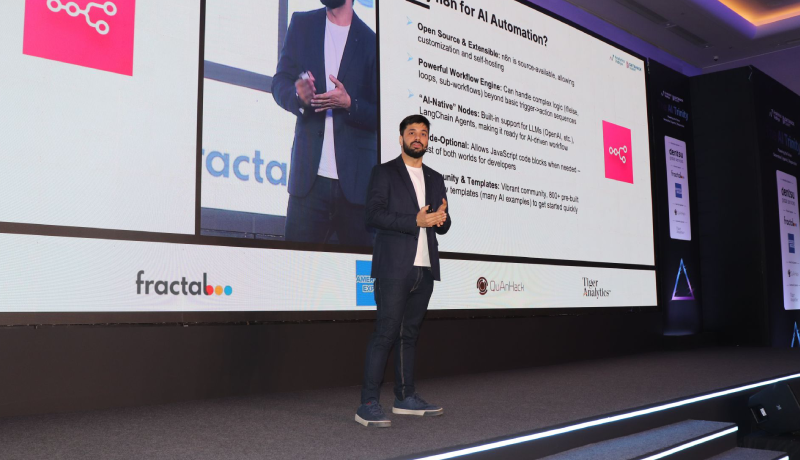
Voice: The New Command
Next came a session that felt like peering into the future of human-computer interaction. Microsoft’s Ranjani Mani, Director and Country Head – Generative AI, and Manoranjan Rajguru, AI Architect, lit up the stage with AI Voice Agents: The Future of Human-Computer Interaction. From customer service to healthcare, they demonstrated how voice-first interfaces will redefine communication with machines. From clicks to conversations, how technology can be made more human than ever before.
Building Trust Through Security and Governance
The conversation then shifted to responsibility and resilience. Satnam Singh, Chief Data Scientist, and Shivaraj Mulimani, Security Data Scientist at Acalvio Technologies, presented their groundbreaking session Red Teaming GenAI: Securing Systems from the Inside Out. They showed how anticipating threats before they strike is the only way forward. The session unpacked methodologies that probe GenAI systems for vulnerabilities and fortify them against adversaries. Their message resonated deeply: in the race to innovate, security cannot be an afterthought.
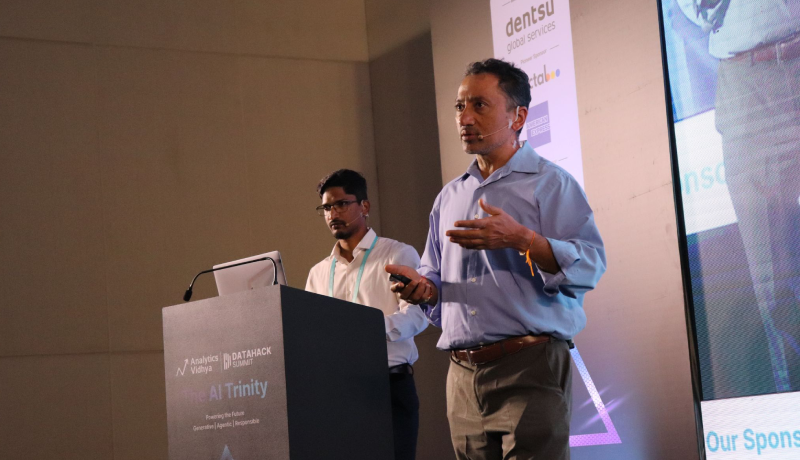
Smarter Cities, Smarter Systems
From security, the spotlight moved to infrastructure. Manpreet Singh, Senior Data Scientist at Microsoft, electrified the audience with Building Real-Time Multi-Agent AI for Public Travel Systems. His demo of RAHAT, an AI system assisting railway and airport passengers, gave a glimpse into a future where AI-powered public travel systems are seamless, intelligent, and accessible. It was innovation designed not for the elite, but for the everyday commuter.
The Battle of the Frameworks
Then came the moment many had been waiting for: AutoGen vs CrewAI vs LangGraph: Battle of the Agent Frameworks. Mayank Aggarwal, Praneeth Paikray, and Sanathraj Narayan ignited an electrifying showdown, pitting three agent frameworks against each other. Each framework showcased unique strengths, and the spirited discussion left attendees buzzing with new ideas. It was a debate that pushed the community to rethink how to build, optimize, and scale agentic AI.
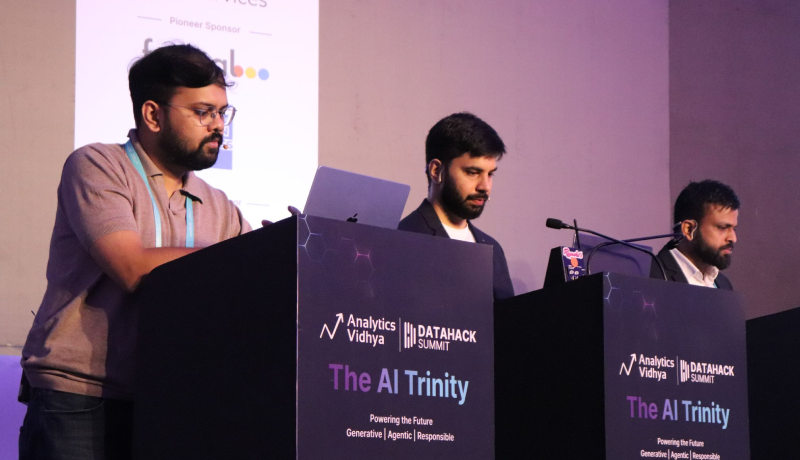
When Agents Speak the Same Language
Avinash Pathak, Senior AI Engineer at NVIDIA, carried the baton forward with Agent to Agent Protocol: Benefits and Workflows. His talk was a vision of the future where AI agents can seamlessly communicate and collaborate across systems. By showcasing how interoperability unlocks efficiency, he left the audience with a powerful takeaway: the future is about smarter ecosystems.
Industry at the Intersection of AI and Impact
The industry use cases on Day 3 were just as inspiring as the frameworks. Prakalp Somawanshi, Principal AI Lead at Shell, in his session Multi-Modal GenAI for Energy Infrastructure Inspection Reports, showcased how combining vision and language models can transform inspections in the energy sector, enhancing safety, efficiency, and compliance.
Equally compelling was Pradeep Kumar, Senior Software Engineer at Emirates, who presented From Vision to Action: Multi-Modal Agentic AI in Real-World Use. His session proved that this isn’t about futuristic dreams, but about AI systems already making tangible impact, from aviation to logistics to retail.
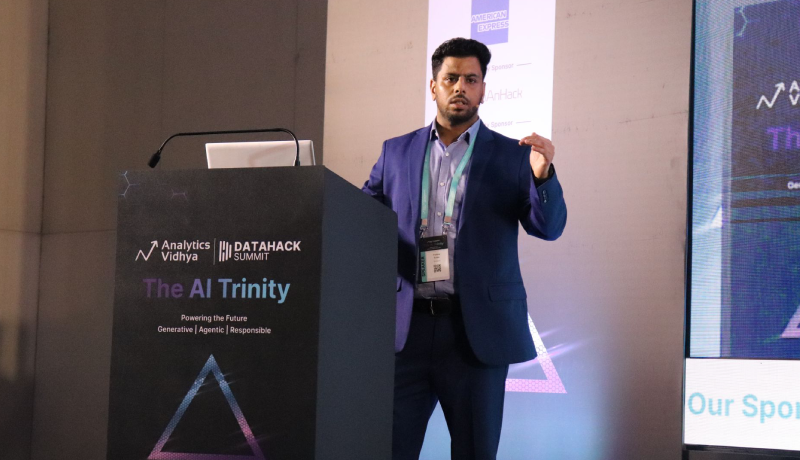
Creativity, Collaboration, and Beyond
The final sessions carried the audience into the heart of creativity and collaboration. Dhruv Nair, Machine Learning Engineer at Adobe, explored Creative AI Agents: Open Tools for Collaborative Media Creation. He showed how AI can become a co-pilot for designers, storytellers, and creators. Meanwhile, Luis Serrano, Founder and Chief Education Officer at Serrano Academy, captivated attendees with A Visual Guide to Attention Mechanism in LLMs. The session turned a complex concept into an elegant, visual narrative.
Together, these sessions reminded the community that AI is not just about efficiency. It is about enhancing imagination and human potential.
The AV Luminary Awards: Honoring Day 3 Trailblazers
The day closed with celebration and applause as the AV Luminary Awards recognized the Top 7 AI Community Contributors. These leaders have advanced the AI community with their dedication, collaboration, and impact.
Joshua Starmer PhD
Bhavishya Pandit
Dipanjan S.
Lakshmi Devi Prakash
Abhishek Divekar
Sarvagya Agrawal
Avinash P.
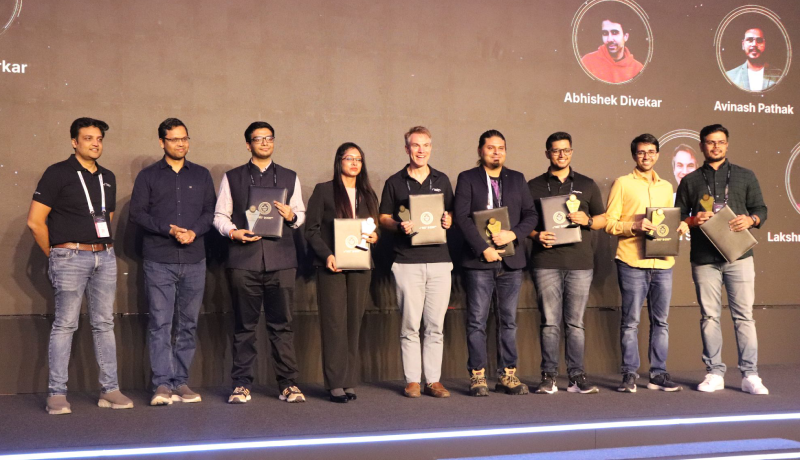
Their recognition was a tribute to the spirit of collective progress that DataHack Summit embodies.
DHS 2025: Closing Reflections
Day 3 of DHS 2025 was a fitting finale to three days of vision, vigor, and velocity. From sovereign AI for India to the battle of frameworks, from securing systems to democratizing development, the conversations sparked at DataHack Summit 2025 will echo long after the lights dim.
Because DHS isn’t just about what AI can do today. It’s about what we, as a community, will make possible tomorrow.
Login to continue reading and enjoy expert-curated content.

💸 Earn Instantly With This Task
No fees, no waiting — your earnings could be 1 click away.
Start Earning














